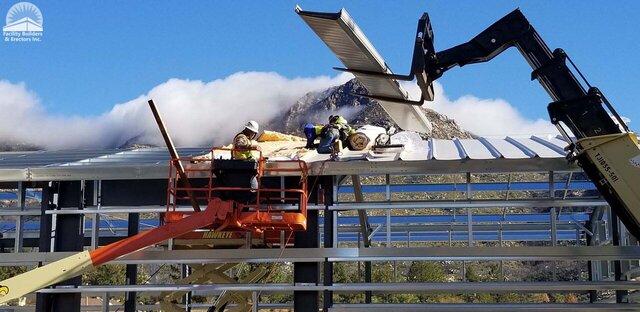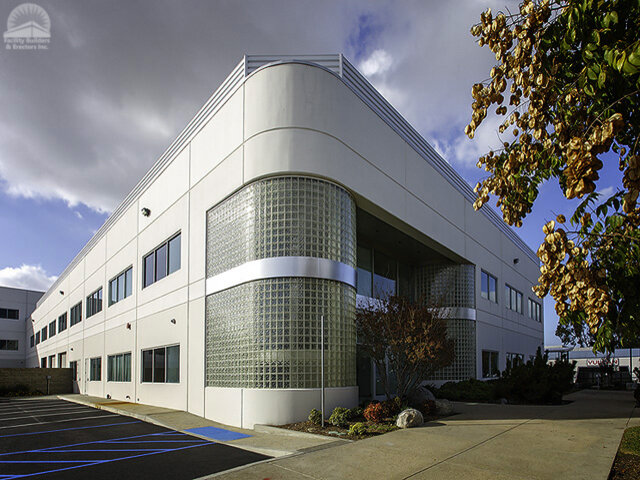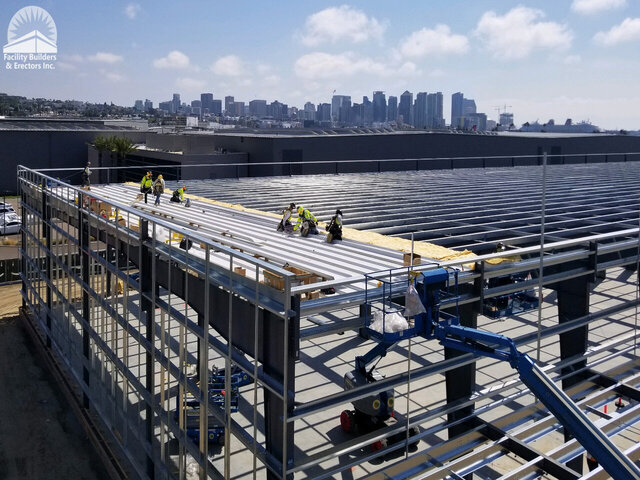Which construction material is more sustainable - wood, concrete, or steel? We break down the durability and environmental impacts of each.
Modern construction incorporates a wide range of materials. Each breaking down or eroding at variable rates, and each put varying strains on our environment.
Understanding construction material sustainability is important when building a new facility. It impacts the strain put on your community and your lifetime cost of ownership.

What are Sustainable Construction Materials?
Construction sustainability hits on two major components:
1. The ability of the material to be maintained and endure, or reversely, its rate of deterioration.
2. The material's impact on our environment and depletion of natural resources.
Material breakdown is highly dependent on where you are located and the organic nature of your building material. Wind, rain, cold, and heat can all influence material deterioration - some materials are more susceptible. Knowing which materials are best suited for your location is important.
Environmental impact is dependent on the amount of energy needed during production, whether natural resources are exhausted, and if the material can be recycled.
Here's what you need to know about the sustainability of today's most popular construction materials.
Sustainability of Wood in Construction
Wood does not have to undergo energy-intensive processes to be converted into a construction product. Thus, making it an environmentally friendly and sustainable building material. Wood can also be reclaimed, reducing its embodied energy.
Additionally, wood is a resource that can be grown and harvested over and over again. We do not deplete natural resources when building with wood because it can be regrown. Wood is a renewable construction material.
But wood is a natural product and prone to deterioration. Wood is greatly impacted by environmental conditions like rain, snow, cold, and heat. It can shrink, swell, rot or burn and it attracts pests like termites and carpenter ants.
While wood can be treated to prevent these issues, wood structures still require regular maintenance and repairs. This uses more materials over time, reducing wood's overall sustainability.
Concrete's Sustainable Legacy
One does not require a trip to Rome to see that concrete can survive the impact of both nature and humans over two millennia. Mass structures across the globe are made using concrete, and that concrete is part of a harmony of products being utilized together in most projects, including steel projects.
Most every modern building has concrete, whether in its tilt-up walls, foundation, or flooring. By itself, however, concrete lacks tensile strength. Reinforced concrete--concrete embedded with metal mesh or rods--was invented by early Victorian horticulturalists for use in planters. It was only later in the 19th century that builders adopted the concept, originally to protect iron and steel structures from fire by wrapping the metal in concrete. Symbiotically, the steel provided the tensile strength lacking in the concrete. And thus, reinforced concrete as a standard building product was born.
Concrete structures age well, becoming increasingly stronger over time. When it comes to material resilience, modern concrete can be mixed to be even more durable. Quality concrete is impermeable to water and harmful chemicals, resistant to pests and rotting, and withstands deterioration or erosion from wind, fire and water. Because of its strength and need for little upkeep, quality concrete is used extensively for commercial buildings, foundations, bridges, roads and dams.
A completely renewable resource, concrete can be recycled into an aggregate to be used in other construction applications. For example, what was once a department store might become a boulevard on the other side of town.
Concrete is sustainable also in the way of transportation emissions and costs; most concrete is made at a nearby facility, ensuring construction project efficiency while supporting local businesses and the families that rely on them.
And concrete brings energy efficiency to a structure. Its thermal mass, or ability to store energy, helps moderate inside temperatures, especially when the concrete is coupled with modern heating or cooling technologies built into the structure.
Finally, concrete finishes are long lasting and endlessly customizable with a variety of textures and shapes. But when it comes to choosing a building material, it comes down to the client's choice of finishes, as many different methods can be used to achieve the same visual effect.

Sustainability of Steel Framed Buildings
The initial production of steel is energy-intensive, requiring mining, heating, and transportation of heavy materials. But the amount of energy required to produce one ton of crude steel has been reduced by more than 60 percent since the 1960s.
And steel is recyclable. It can be used again and again to create sustainable construction materials. It is the only material used in construction today that can be 100 percent recycled and re-used.
Steel is also highly resistant to corrosion and natural breakdown. Steel buildings are long-lasting and do not need regular replacement like wood or concrete. With little maintenance, steel structures can last decades.
Builder-grade steel is coated to prevent corrosion, warping, and burning. Because of its inorganic nature, steel is also resistant to mold and pests/bugs.
Pre-engineered steel buildings are even more sustainable. Structural steel frames are produced offsite, vastly improving waste control. There is also less pollution around the construction site because heavy machinery isn't required. A true win-win.
Choosing a Sustainable Construction Material
When deciding what your next facility should be constructed from, sustainability should be considered. Ask yourself what material is best for your location, whether that material will be costly to maintain, and if your building materials can be recycled in the future.
Be a responsible building owner and choose sustainable construction materials that benefit your community and the environment. You'll be rewarded with structures that last longer and require less upkeep.
When you're ready to navigate your next project, reach out to the Facility Builders & Erectors' team today!
714-352-4981
Published on March 10, 2021 | Comments: 0

Leave a comment